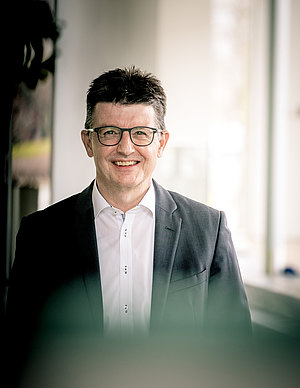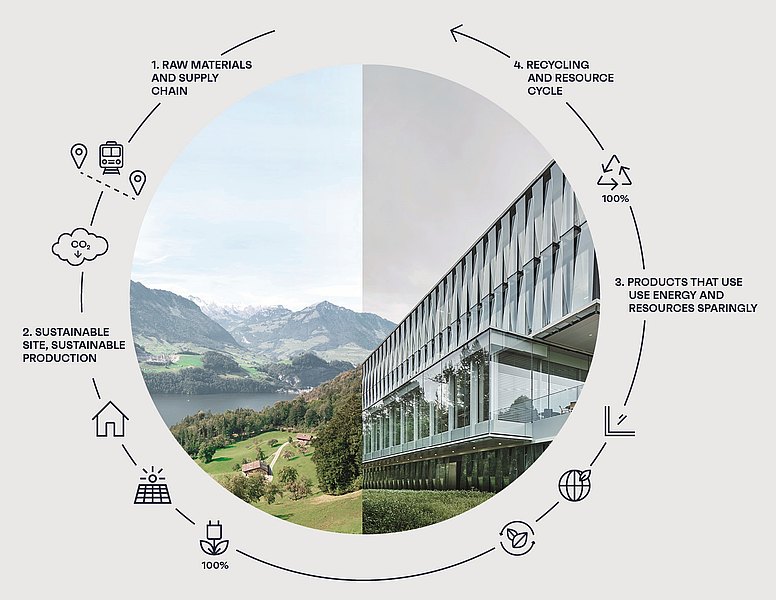Sustainability
For us, being sustainable is about giving buildings a long life in today’s fast-paced world. Forster also ensures that resources are used as sparingly as possible and develops products that can be returned to the material cycle at the end of the building service life.
Steel as a raw material: long-lasting and environmentally friendly
150-year-old orangeries and factory buildings from the Bauhaus era show that steel is durable. It lasts as long as the building where it is used. This durability can be a decisive factor in contemporary building certification. Thanks to their outstanding static values, steel systems also need less material during production. Additional chemical surface treatment can also be dispensed with when stainless steel is used. Meanwhile, maintenance work is also significantly minimised over the years. When it’s time for the building to be dismantled, the raw material can be completely reused for future buildings.
Recycling and the life cycle assessment: ready for the circular economy?
For many years, steel has been the most commonly used and recycled industrial material. What sets it apart from many other materials is its ability to be recycled multiple times. Steel can be melted down and reused an unlimited number of times. At the same time, its quality is maintained with each new product cycle – with the ecological footprint reduced each time it is reused. This was proven back in 2013 in a study by the Technical University of Berlin. No wonder that around 84% of the more than 60 billion tonnes of steel produced since the second half of the 19th century is still in use in the circular economy.
 | We are committed to being carbon neutral by 2035.
Willi Lüchinger CEO Forster Profile Systems |
How are we making our branch more sustainable?
1. Raw materials and supply chain
We are in constant discussions with our key suppliers on how we can continually improve sustainability in production while taking social and economic aspects into account.
2. Sustainable site, sustainable production
Sustainable energy production, new company campus: The buildings and sites at Forster are set up towards achieving our sustainability goals – for example, carbon neutrality by 2035.
3. Products that use energy and resources sparingly
Our steel products combine minimal material use with outstanding insulation values. Building operators save energy and the impact on the environment is reduced.
4. Recycling and resource cycles
A long service life, then back into the resource cycle: For a long time, our product development has focused on the easy dismantling of buildings and recycling of the materials used.

